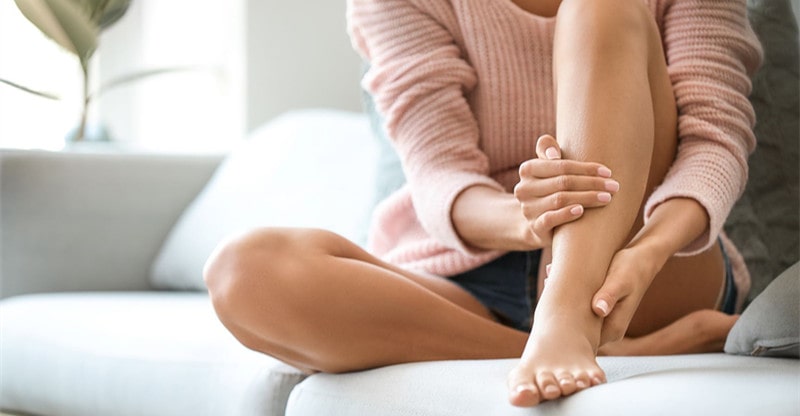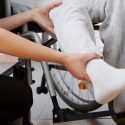Foot Health: Different Foot Ailments and Their Corresponding Treatments
The feet are an important part of the body and are essential to mobility. You can’t get around if you have pain or any issues with your feet. Having healthy feet helps you enjoy life and helps you do the things you want to do.
Because of its importance and it’s being used every day, the feet take in a lot of abuse, and there may be instances where feet health is neglected. Take note that it’s always essential to take care of the feet as you take care of other parts of the body.
Oftentimes, ill-fitting footwear is a cause of why some people have issues with their feet’s health. It’s important that the feet should be properly supported by good footwear.
Other than not having the proper footwear, there are many reasons why our feet are hurting. Thus, in this article, we’ll talk about different foot ailments and their corresponding treatments. This way, you’ll be aware of how to take good care of your feet.
Here are some different foot ailments and their corresponding treatments:
1. Foot Pain
Foot pain, in general, is highly uncomfortable and excruciating. It’ll keep you from doing your daily tasks in an efficient manner.
Many people suffer from foot pain because of the overuse of some parts of the foot. Runners and athletes often suffer from foot pain because they’re in constant physical activity.
There are two common forms of foot pain: sesamoiditis and plantar fasciitis. Sesamoiditis is a kind of foot pain that manifests under the toe joint.
On the other hand, plantar fasciitis is often experienced by people who work out and do a lot of running often suffer from this pain. This kind of foot pain is a result of the overuse of a ligament in the leg. If you’re overweight or middle-aged, you’re also likely to get plantar fasciitis.
Treatment For Foot Pain
If you have foot pain, the first thing a podiatrist will look into is the type of footwear you’re using. There are a variety of footwear that conforms to different kinds of feet, and your podiatrist will likely assess if your footwear supports your particular heel and arch of your foot.
If your pain is more severe or chronic, surgery may be advisable or injections. However, in most cases, treatment for plantar fasciitis doesn’t include any surgery.
2. Athlete’s Foot
Athlete’s foot is a type of foot ailment that originates from fungi. The fungal infection usually manifests as redness between the toes. It’s uncomfortable and even embarrassing. It also causes the victim to have severe itching discomfort and even pain.
In some cases, an athlete’s foot can even spread to other parts of the body, such as the hands, groin, and scalp. Athlete’s foot is often transmitted in public areas, such as gyms, swimming pools, or showers.
If you wear closed shoes that are wet and damp, you’re also likely to get an athlete’s foot because the fungi love these kinds of conditions.
Treatment of Athlete’s Foot
You should do the necessary maintenance to keep athletes’ foot away. Keep your feet clean and dry. If they get wet, use a separate towel to dry them.
Getting rid of athlete’s foot is easy. There are many effective medications that can be purchased over the counter in drugstores. You can choose from a vast array of antifungal products, which include lotions, sprays, and powders.
If these medications still don’t work, you have to consult with a doctor who’ll prescribe a stronger antifungal drug to get rid of your athlete’s foot.
3. Bunions
Bunions are often caused by narrow footwear. You’re also likely to get bunions if you have a family history of it.
Bunions are also unsightly and painful. It’s a bump that normally develops on the large toe joints. Because of the bump, it can cause the big toe to have an irregular angle and shape. Shoes that are too tight cause pressure in the foot, particularly in the metatarsophalangeal joint (MTP).
Treatment of Bunions
Proper maintenance should be done to keep the bunions from getting worse. The first thing to do is to get good footwear that’ll not cause pressure on the bunion. A pad should be put in place in the bunion to protect it.
Since a bunion is a type of inflammation, applying ice on it can help reduce the swelling. Podiatrists can also recommend a splint to help straighten the big toe.
If the bunion doesn’t heal, surgery may be advisable.
Final Thoughts
You frequently use your feet on a regular basis. If you have any type of foot ailment, it’ll cause a lot of discomfort in your life.
The feet are as important as any part of your body, and they should be healthy. Thus, you have to apply the necessary measures once you find that you have foot ailments. Getting immediate help and treatments will help from getting foot diseases out of hand.



